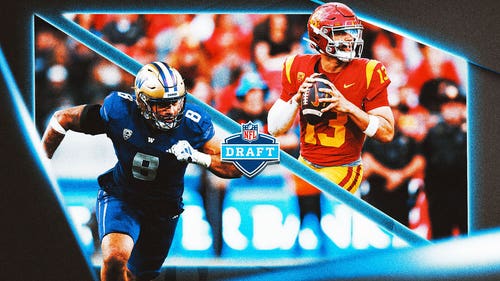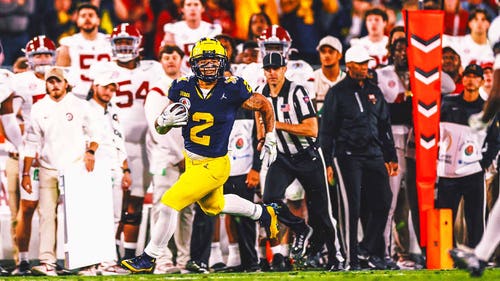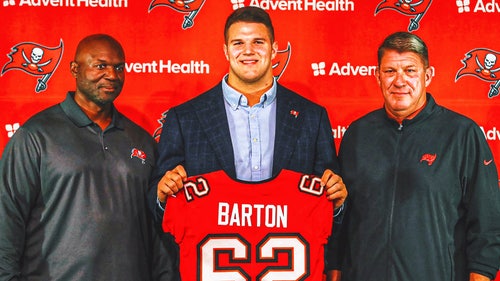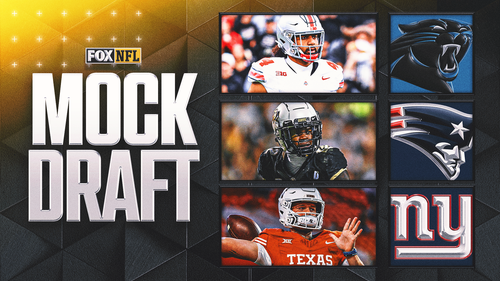





































































































































Quarterbacks need even more protection
With Michael Vick having been theatrically concussed on national television, his weekly presser understandably cancelled and his status for Sunday still unclear, the time has come to disabuse you of some longstanding notions.
Not so much about Vick, but the position he plays. Turns out, it's easier to change a man's behavior — even his nature, perhaps — than his manner of play. You can alter the schemes, the protections, whatever you want. But ultimately, Michael Vick will play like Michael Vick; the limitations to his style will be a function of age and injury.
Still, there's a larger point to be made about quarterbacks. The widespread, commonly accepted idea that they're unjustly babied and overly protected — a notion most famously propagated by the great Pittsburgh linebacker Jack Lambert, who suggested they wear skirts — is patently false. By and large, quarterbacks are the toughest guys on the field. They are exposed to and accepting of a risk unlike any other players. If anything, quarterbacks need more protection. Unfortunately, that probably wouldn't help.
Vick's concussion didn't come as a result of a bad play from his linemen. It didn't come as a result of his freelanced forays into the secondary, either. To say it was a freak accident — reeling from a hit, his head whipping around to crack into his linemen's helmet — also misses the point. It happened in the pocket. The pocket may be the best place for a quarterback, but it remains a hazardous venue, nonetheless.
If not, Peyton Manning — the most efficient pocket passer in history — wouldn't have ventured overseas for an experimental treatment to soothe his mangled vertebrae. It's worth noting again that Manning's consecutive game streak — and with it, the Colts' chances — has come to an end at 208.
That's an extraordinary accomplishment, especially for a guy who averaged 35 attempts a game, 555 a season, for 13 years.
And Brett Favre — remember him? — survived 297 games in a row. That may be the ballsiest, if not the greatest, individual record in sports. Sure, Favre's career got to the ignominious point — what with his aborted retirements and his grievously unsuccessful attempt at a dalliance with Jenn Sterger — where people like me (and me, for sure) loved taking him down. He had it coming, too — all of it. Just the same, tell me, who was tougher than Brett Favre?
The fact is, they're all tough, the quarterbacks. Consider the case of the allegedly soft, skirt-wearing, celebrity-skirt-chasing Tony Romo. The other day, he only came back with a busted rib and a collapsed lung to lead the Cowboys to an overtime victory.
If Romo's performance was an anomaly, his physical courage was not. As it pertains to quarterbacks, he's the rule, not the exception. It's been this way since the advent of the forward pass. On the eve of Super Bowl III, the night he gave his famously tipsy guarantee, Joe Namath concluded his remarks with another equally-true observation. "The name of the game," he said, "is kill the quarterback."
No other player gives up his blind side so willingly or so frequently, not even receivers. Each pass attempt represents the potential ruination of a career. The moment of delivery leaves the quarterback exposed from both flanks. Doesn't matter if he's mobile or immobile. The quality of his line counts, but only to a point. Whatever the case, it's going to happen. The quarterback is going to get hit, and the quarterback is going to get hurt.
Joe Theismann had a great offensive line in front of him. How did that work out? Troy Aikman was another one with a great line. But they couldn't prevent the catastrophic concussions that, as much as anything, ended the Cowboys' run in the '90s. Steve Young had an athletic, nimble line, designed to mitigate the hazards of his reckless style, but his career also ended from concussions.
And for all the new precautions — those rooted in physiology and those based on strict enforcement of the rules — it's only going to get worse.
In 1968 — Joe Namath's championship season — the average team threw 27.6 times a game, according to STATS LLC.
By 1977, Jack Lambert's third consecutive season as a Pro Bowler, it had dropped to 25.0.
In 1983, the year Joe Theismann won a Super Bowl, it was up to 31.4.
Last season, the average team threw an average of 33.7 times.
This year, so far? 34.6.
This may not be great news for those who want to raise their boys as quarterbacks, but the haters who'd put them in skirts should take heart.
Don't worry, fellas. You'll always get your fill.

NFL Offensive, Defensive Rookie of the Year bets to make now, including a long shot

2024 NFL Schedule Release: Date, when does the season start?

What Blake Corum’s addition means for Kyren Williams, Rams’ rushing game

Why a former 250-pound lacrosse player is Bucs’ future leader on offensive line

2024-25 NFL MVP odds: Patrick Mahomes, Josh Allen early favorites

2024-25 NFL odds: Patriots open with lowest Over/Under win total since 1991

2025 NFL mock draft: Who are next year's top prospects

Texans owner: WR Tank Dell will make 'full recovery' after being wounded in shooting

J.J. Watt says he'd come out of retirement if Texans 'absolutely need it'


NFL Offensive, Defensive Rookie of the Year bets to make now, including a long shot

2024 NFL Schedule Release: Date, when does the season start?

What Blake Corum’s addition means for Kyren Williams, Rams’ rushing game

Why a former 250-pound lacrosse player is Bucs’ future leader on offensive line

2024-25 NFL MVP odds: Patrick Mahomes, Josh Allen early favorites

2024-25 NFL odds: Patriots open with lowest Over/Under win total since 1991

2025 NFL mock draft: Who are next year's top prospects

Texans owner: WR Tank Dell will make 'full recovery' after being wounded in shooting

J.J. Watt says he'd come out of retirement if Texans 'absolutely need it'
